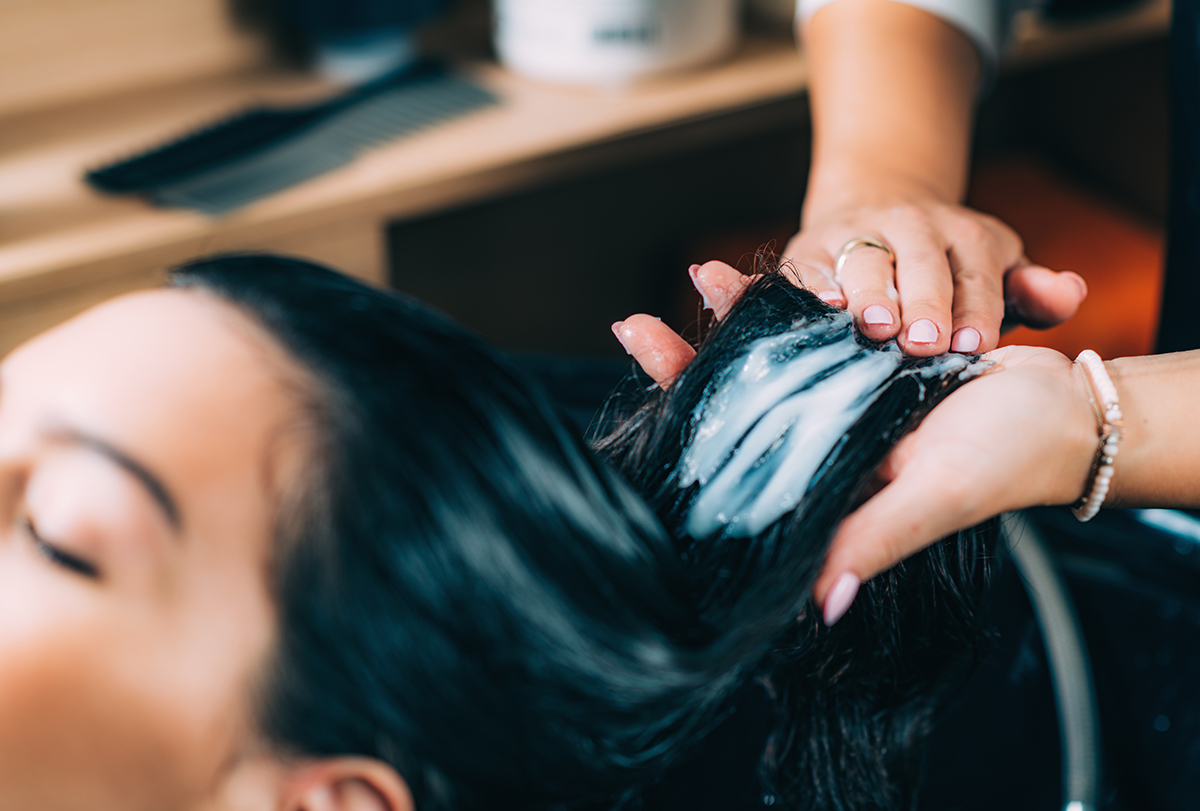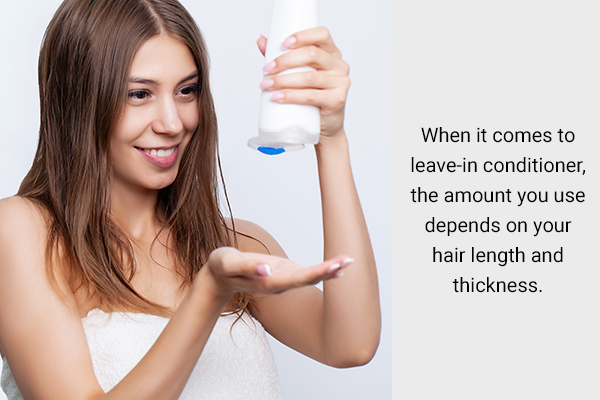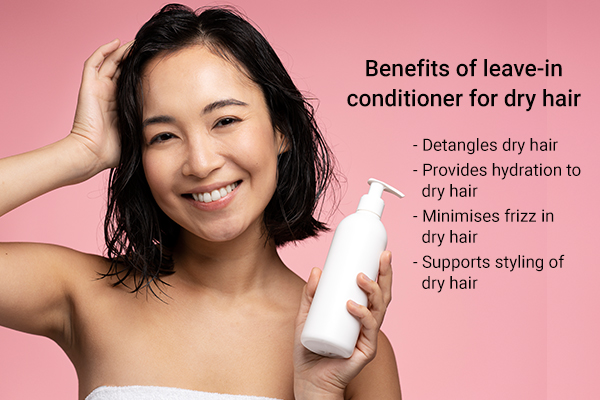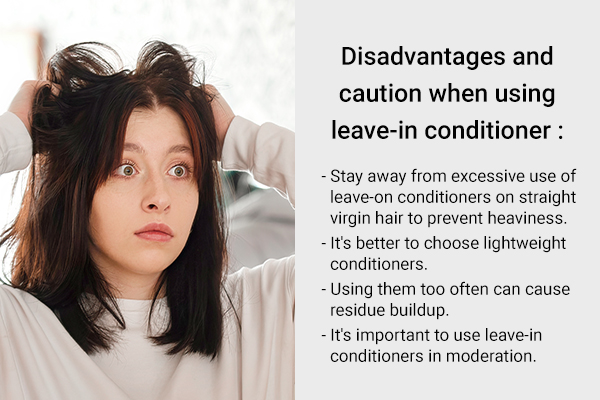In this article:
Yes, if you have dry hair, incorporating a leave-in conditioner into your hair care routine can be really beneficial. It helps moisturize and hydrate your hair, reducing frizz and breakage and making it easier to manage.

Some leave-in conditioners also contain ingredients that shield your hair from the damage caused by the environment. You can apply it to freshly washed or dry hair for additional hydration and defense.
This article will talk about the advantages of using leave-in conditioner on dry hair. (1)(2)
Read on to learn more.
What Is the Perfect Way to Apply Leave-In Conditioner on Dry Hair?
To apply leave-in conditioner on dry hair, follow these simple steps:
- Start with towel-dried or little damp hair.
- Take a tiny portion of leave-in conditioner in your hand.
- Rub your palms to spread the conditioner equally on your palms.
- Gently apply the conditioner to your hair – on the mid-lengths and ends where dryness is commonly seen. Avoid applying it to your scalp.
- Use your fingers or a wide-toothed brush to comb your hair to make sure the conditioner reaches all the strands.
Note: Remember, a little goes a long way with leave-in conditioner, so start with a pea-sized quantity and use more only if required.
How Much Leave-In Conditioner Is Needed for Dry Hair?

The amount of leave-in conditioner you need depends on your hair length and thickness. Experts suggest starting with a small amount, such as the size of a pea, and increasing it if necessary.
For fine hair, do not apply it to the roots to make sure you’re not weighing your hair down. If you have thick or curly hair, you might require more conditioner to cover all strands.
What Is a Leave-In Conditioner and How Does It Differ From a Normal Conditioner?
Leave-in conditioners, also known as leave-on conditioners, are specially formulated products that you can include in your hair care routine.
You are supposed to let them sit on your hair without rinsing. They come in various forms such as sprays, mousses, and lotions.
According to experts, leave-in conditioners are more suitable for dry or damaged hair that needs extra moisture. Unlike regular conditioners that you rinse out, leave-in conditioners are developed to sit on your hair.
They work by strengthening and detangling your hair strands, making them easier to comb, manage, and style. (1)(2)
Here’s how leave-in conditioners differ from normal conditioners:
| FACTOR | NORMAL CONDITIONER | LEAVE-IN CONDITIONER |
|---|---|---|
| Application | Applied to wet hair after shampooing and rinsed out after a few minutes | Can be used on dry or damp hair and is left in the hair without rinsing out |
| Primary function | Hydrates the hair | Strengthens the hair |
| Frequency of use | Used after shampooing, which is generally 2-3 times/week | Can be used daily, if needed |
| Availability | Available in a creamy consistency | Available in sprays, mousses, or lotions |
| Hair type | Can be used for all hair types | Generally recommended for dry hair |
Benefits of Leave-In Conditioner for Dry Hair

Using leave-in conditioner can provide several benefits for your dry hair, such as: (1)(3)
- Detangles dry hair – Dry hair is more prone to getting tangled. Leave-in conditioners help to reduce the friction between hair fibers, making them easier to comb and style.
- Provides hydration – By providing a light layer of moisture and protection, leave-in conditioners can make dry hair more manageable.
- Minimizes frizz – Leave-in conditioners help to seal in moisture and prevent moisture loss, reducing frizz.
- Enables easy styling – Leave-in conditioners provide strength and hold to dry hair, helping to maintain hairstyles for longer durations.
Disadvantages and Caution When Using Leave-In Conditioner
Experts recommend the following measures when using leave-in-conditioners: (1)

- Stay away from excessive use of leave-in conditioners on straight virgin hair to prevent heaviness.
- Choose lightweight conditioners.
- Using leave-on conditioners too often can cause residue buildup.
- Use leave-on conditioners in moderation.
Most-Asked Questions About Using Leave-In Conditioners
Can leave-in conditioners be used on all hair types?
Yes, experts claim that leave-in conditioners can be used on all hair types, but the type of product and amount used may vary.
How often should I use a leave-in conditioner?
It’s advised to use a leave-in conditioner after shampooing or as needed for styling purposes.
Final Word
Leave-in conditioners are a type of hair conditioner that provides additional moisture, nourishment, and protection to the hair. They are especially useful for those with dry hair or those who frequently style their hair.
However, excessive use of leave-in conditioner can weigh down the hair and cause buildup. So, use it in moderation.
- Was this article helpful?
- YES, THANKS!NOT REALLY


